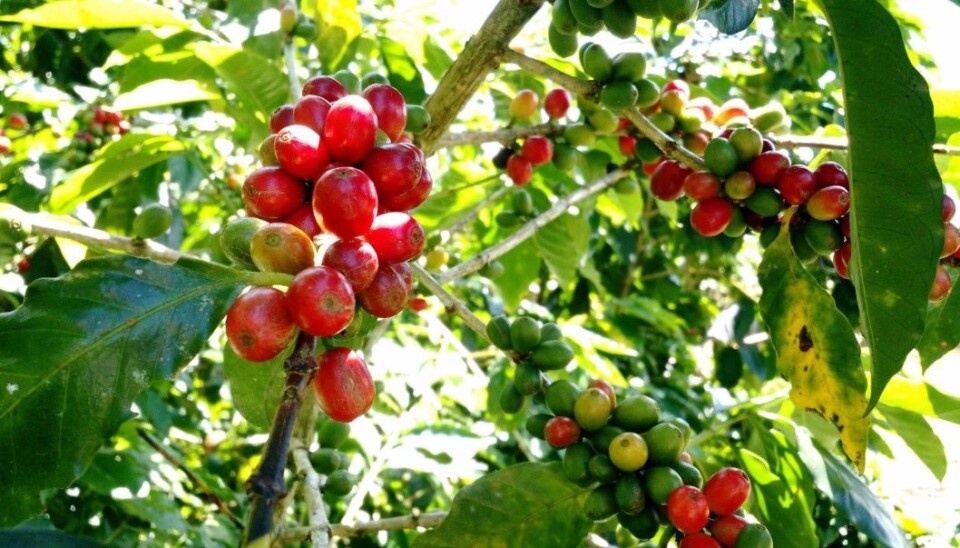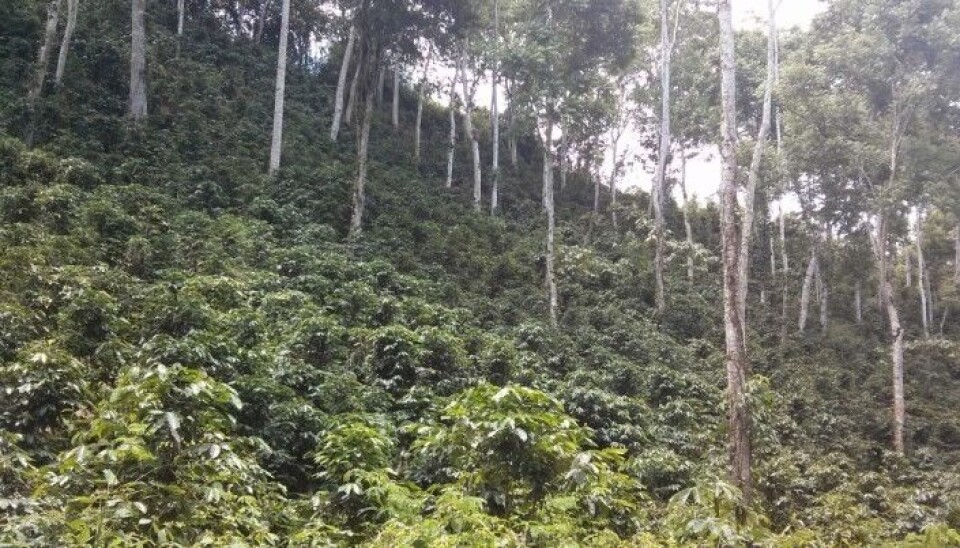This article is produced and financed by Inland Norway University of Applied Sciences - read more

Climate change threatens coffee production: This is how farmers can adapt
Norwegians love coffee, and we are no strangers to a little bit of chocolate either. But a warmer climate now threatens our preferences – and even worse – the livelihood of thousands of farmers in Central America.
The most common coffee plant, Coffea arabica, is very particular in terms of growing areas, and it is very vulnerable to extreme weather, disease and pests, which are becoming more prevalent due to warmer weather.
Coffee farmers in the area of central Mexico and southward – the countries of Guatemala, Belize, Honduras, El Salvador, Nicaragua, Costa Rica and Panama are already noticing the consequences of global warming on their crops.
Now, researchers have examined possible strategies for saving coffee and cocoa production, and the vulnerable farming communities.
The results were recently published in the scientific journal Scientific Reports.
Several areas will not be suitable for coffee production in 30 years
The researchers have taken as a starting point the UN climate scenarios and examined what the coffee farmers in Central America can expect up to the year 2050. It seems like the forecast is rather bleak.

“Over half of the areas where coffee is grown in this part of the world today will no longer be suitable for coffee production in 2050,” says Kauê de Sousa, a PhD fellow at Inland Norway University of Applied Sciences, and one of the researchers behind the study.
“Some of the loss can be mitigated by moving production higher up to the mountains, but this is nowhere near enough to save the farming communities.”
Change from coffee to cocoa
One of the strategies already used to some extent for meeting the climate challenges, is changing the production from coffee to cocoa.
According to the report, cocoa production can replace up to 85% of the affected coffee areas in Central America. Declining cocoa production in other parts of the world, also due to climate challenges, has made it economically beneficial to switch to cocoa production. Such restructuring is supported by both authorities and humanitarian aid organizations.
But the researchers have uncovered some major problems with this strategy.
Thrives in the shade of disappearing trees
“It is the case that both coffee and cocoa thrive best in the shade of other trees. In some places it is natural vegetation that provides such shade, in other places it is a form of farming, also known as agroforestry, where coffee and cocoa are grown together with fruit trees, trees that are grown for timber or trees planted to provide soil improvement,” explains de Sousa.
The researchers found that the strategy of replacing coffee with cocoa to adapt the region to climate change has not taken into account that these shade-providing trees will also be affected by a warmer climate.

“We have therefore looked at and evaluated the 100 most common types of trees used in such agroforestry in view of the climate change in UN projections. We found that many of these types of trees will be affected by warmer climates in such a way that it will threaten the opportunity to grow coffee and cocoa in these areas in a profitable way,” says de Sousa.
Should switch to new tree species
But the researchers also uncovered some good news. There are tree species that will withstand climate change better than others. If the farmers replace the shade-providing trees on the plantations with such tree varieties, much of the production of both coffee and cocoa can be maintained.
“Active and planned agroforestry is, in our view, a viable strategy for continuing to produce coffee and cocoa in this region. But it is urgent to change the composition of trees. Both the shade-providing trees and the coffee and cocoa plants are perennial plants, for which it takes time from planting until the first crops can be harvested, explains de Sousa.
Knowledge must be spread
The challenges lie in spreading this knowledge to the authorities, humanitarian aid organizations and the farmers themselves, explains the researcher.
Farmers must dare to take the chance to convert to a more planned agroforestry, which can save them in the long run, but which has some costs in the short term.
“If the region succeeds in this, it will entail opportunities,” says de Sousa and continues: “Farmers largely being able to maintain coffee production is not the only thing. Large areas of Central America will be better suited for producing cocoa than many of the places that currently have the largest cocoa production, especially West Africa. The cocoa crisis has already been announced here,” says the researcher.
The research is a cooperation between Inland Norway University of Applied Sciences, Wageningen University (The Netherland), Bioversity International, and World Agroforestry.
Reference:
de Sousa, K. et al.: The future of coffee and cocoa agroforestry in a warmer Mesoamerica. Scientific reports. (2019)
———-
Read the Norwegian version of this article on forskning.no


































